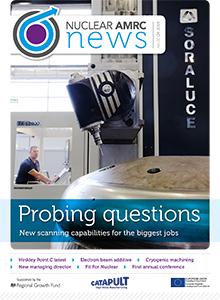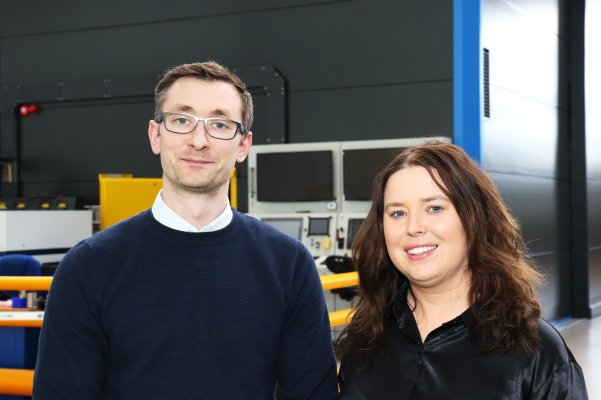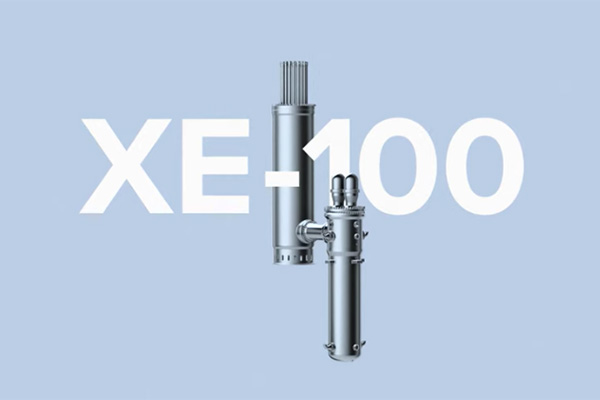The Nuclear AMRC is exploring the use of cryogenic coolant for civil nuclear machining, with the aim of improving machining efficiency and increasing tool life while minimising the risk of component failure.

Cryogenic cooling uses extremely cold gas or liquid to control the heat generated during machining. Benefits can include reduced residual stress and thermal damage, improved surface roughness and longer tool life.
Nuclear AMRC machining researchers have installed a carbon dioxide cooling system to the Hermle C60, a flexible five-axis mill-turn centre, and investigating its use in cutting a range of hard-to-machine metals, including steels, titanium and nickel alloys. CO2 can replace conventional coolant for many cutting tasks, and can potentially benefit processes which are usually run dry.
The ChilAire Aero system delivers a controlled stream of carbon dioxide gas and CO2 ice particles through the machine spindle or external nozzles.
As it expands, the CO2 reaches temperatures as low as –78°C. This is not as cold as temperatures achieved with liquid nitrogen, the standard for cryogenic cooling, but is more controllable and reduces the risk of adverse material effects.

“We are looking to develop this environmentally-friendly technology for nuclear applications,” says Dr Krystian Wika, advanced cooling technology lead at the Nuclear AMRC. “One of the major benefits of cryogenic machining is that it has the potential to reduce residual stress and help prevent stress corrosion cracking.
“With carbon dioxide, our aim is to optimise the key process variables so we can control the cooling and improve the surface integrity. If you can obtain favourable compressive stresses instead of tensile stresses, you can help stop crack initiation and propagation and extend the life of nuclear components.”
Initial research is benchmarking carbon dioxide against conventional coolant, and seek to understand how it behaves under different application modes, flow rates, pressures and machining parameters.
Carbon dioxide avoids the chemical hazards of conventional coolants, and can be used in non-enclosed portable machining tools, but the gas does bring its own risks in the workplace. The Nuclear AMRC has introduced additional safety measures around the Hermle during trials, including CO2 alarms and personal exposure monitors.
The researchers are also using another recent addition to the machining group’s R&D armoury, a state-of-the-art high-speed thermal camera.
The Flir X6580sc cryo-cooled medium wavelength infrared camera can visualise and quantify changes in surface temperature and heat dissipation during machining processes, including drilling, milling and turning.
The camera is fully calibrated from –20° to 1500°C and can take up to 355 frames per second at 640×512 pixel resolution.
“This is probably the fastest thermal camera on the market with this level of detail, and has a range of unique features,” says Wika. “It will help us reach a deeper understanding of cryogenic cooling and many other challenging issues in high-performance machining.”
 For more news on how the Nuclear AMRC is supporting industry through manufacturing R&D and supplier development, download our Q4 newsletter (4MB pdf).
For more news on how the Nuclear AMRC is supporting industry through manufacturing R&D and supplier development, download our Q4 newsletter (4MB pdf).




